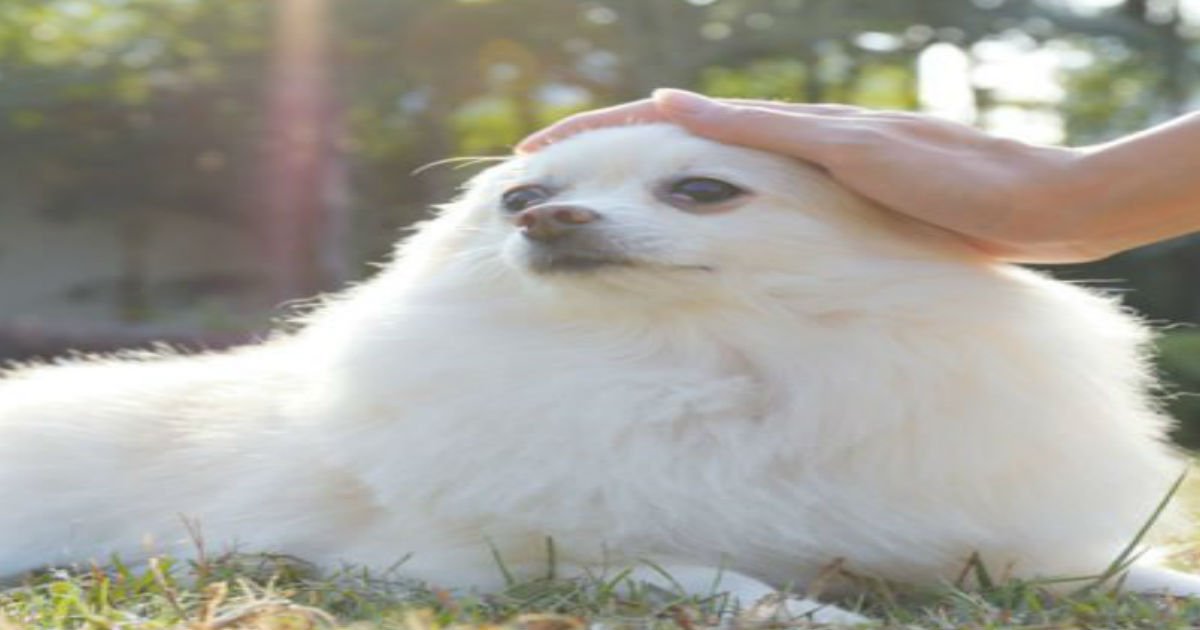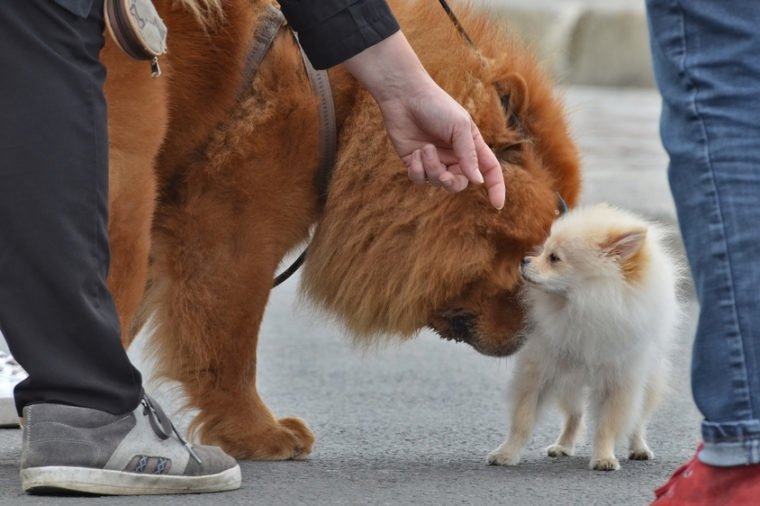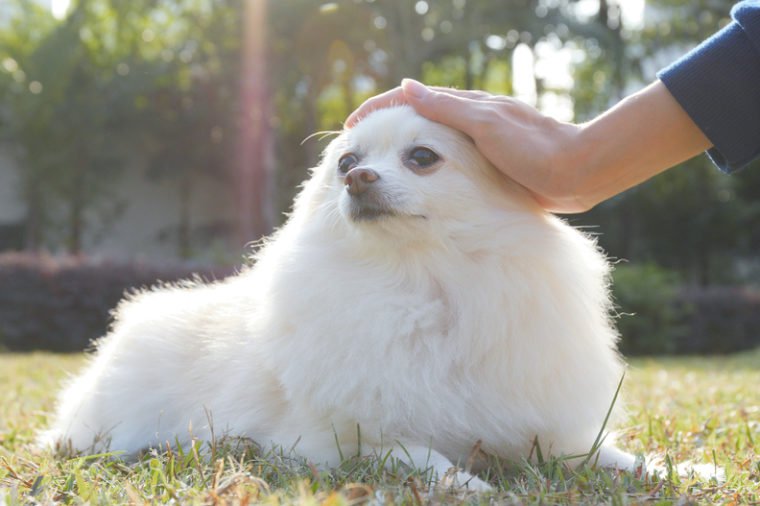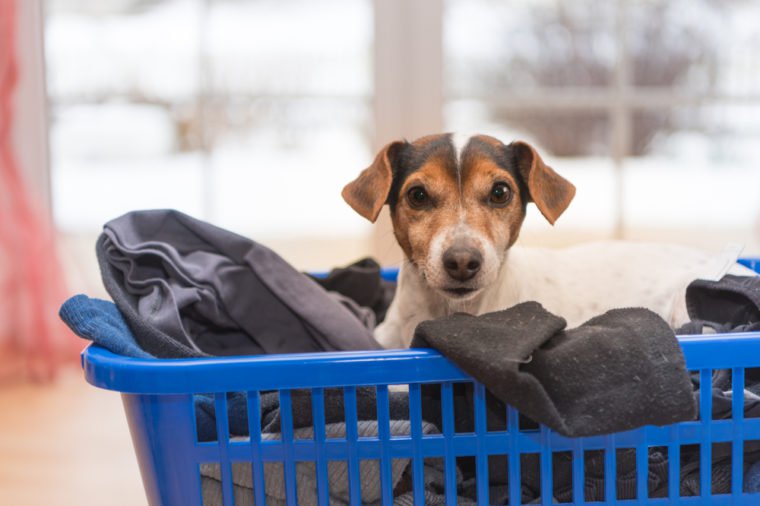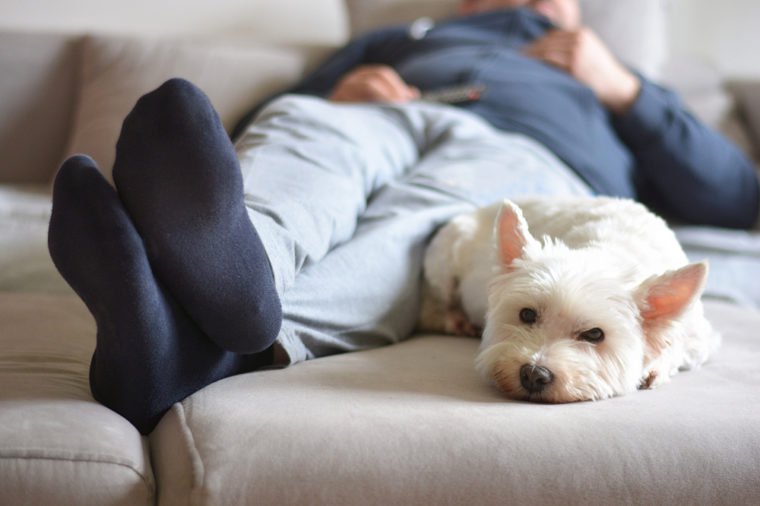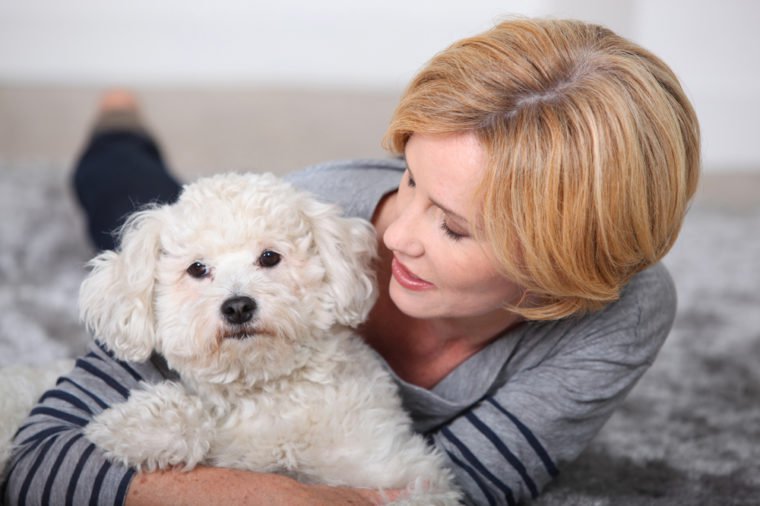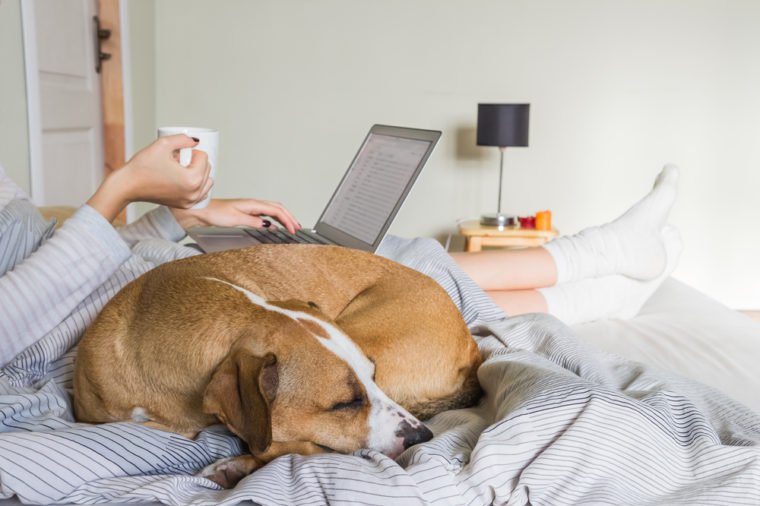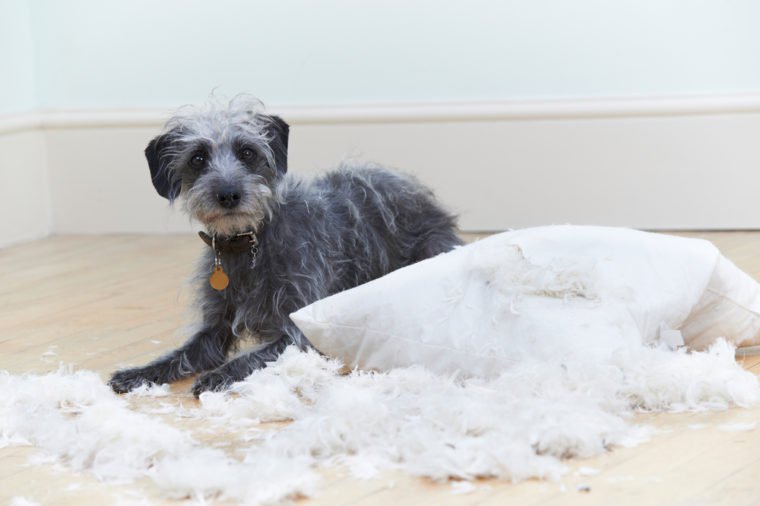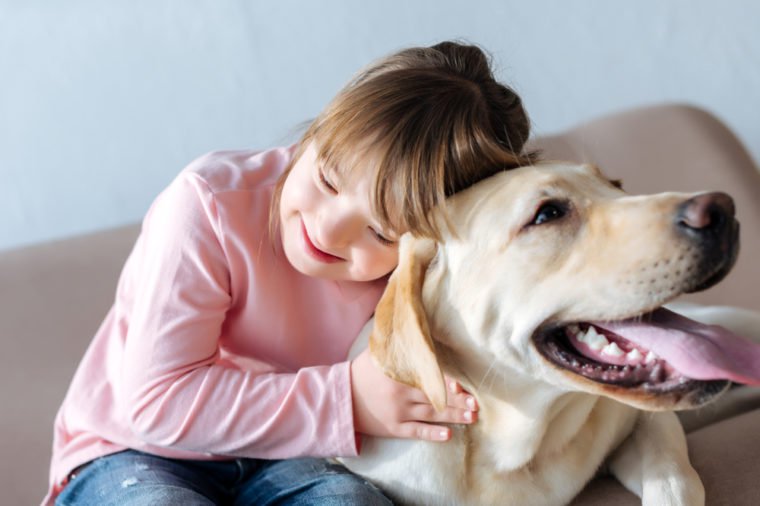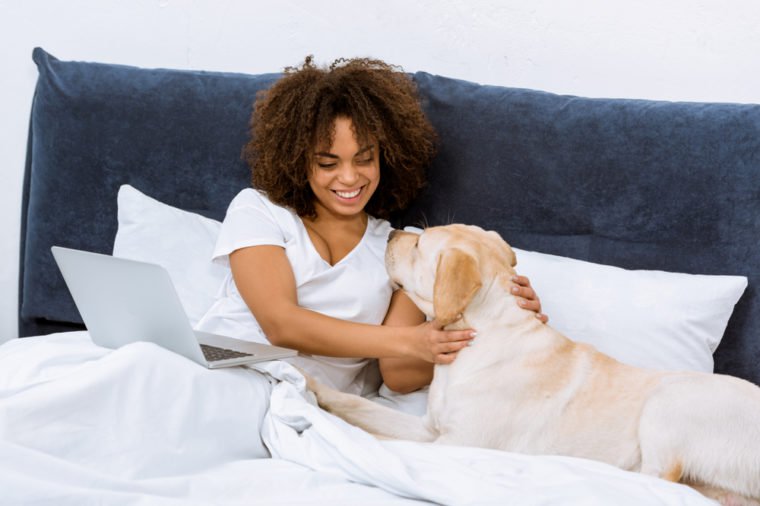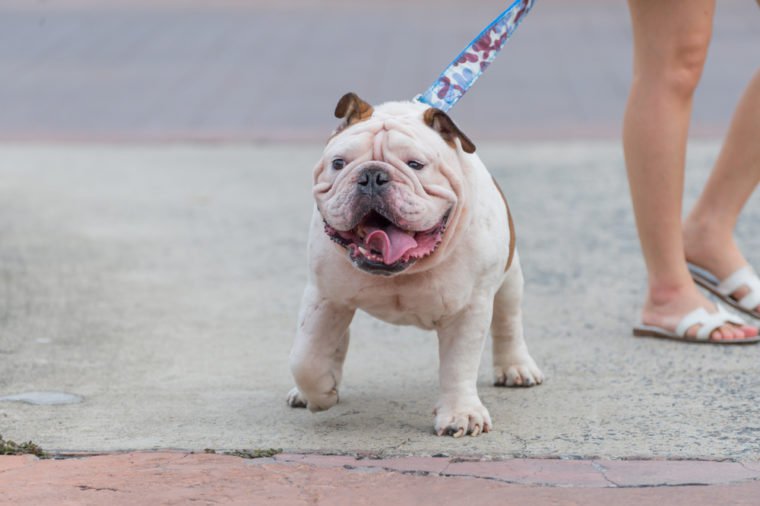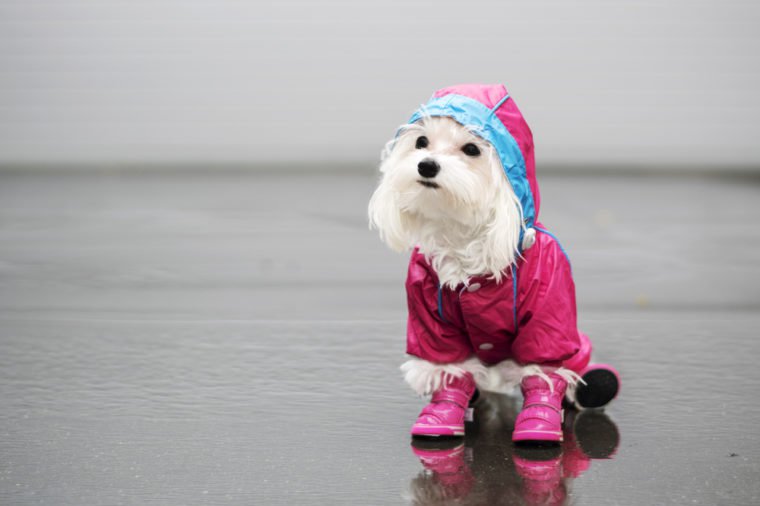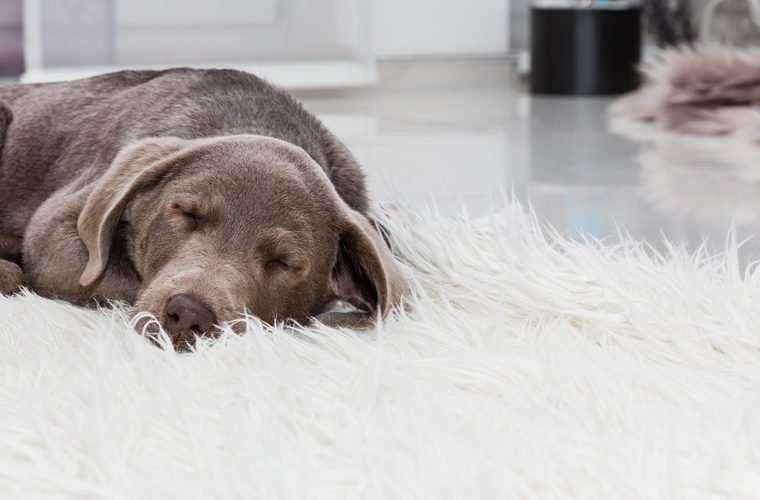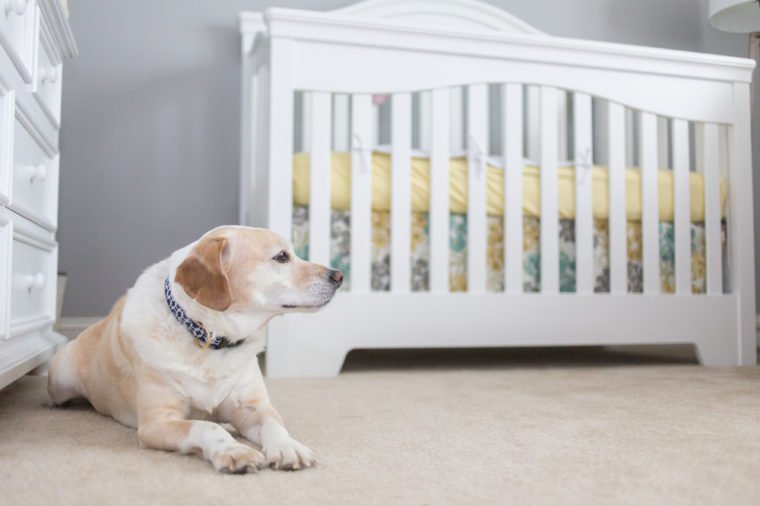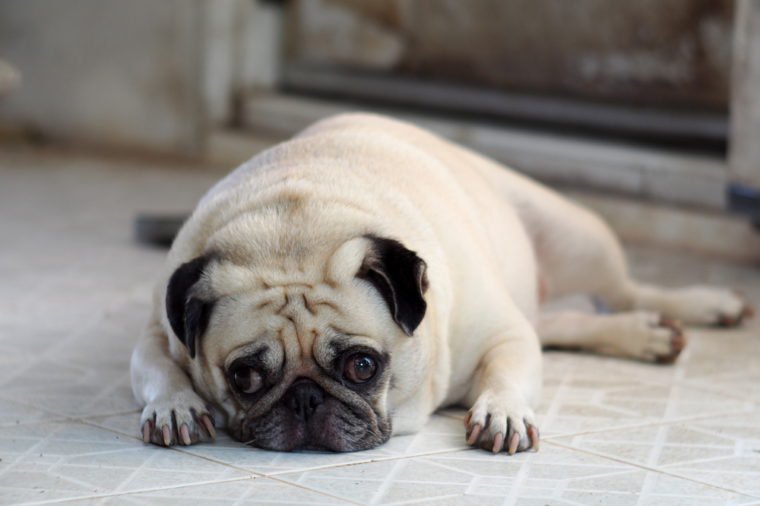How would you feel if someone gave you unwanted hugs and commanded you to “make friends” with everyone you meet?
Forcing them to “make friends” with everyone
This may be hard to hear but your chill, friendly pup may not be as into street meet-and-greets as you think he is. “While your dog may adore your affections, he may not be so keen when it comes to others,” says Meg Marrs, a dog behavior expert and senior editor at K9 of Mine. He may do it to please you, but if he shows any signs of discomfort, don’t push it. “It’s important to respect a dog’s wishes and give them space if they don’t seem interested in saying ‘hi’ to strange people or dogs.”
Patting their head
You can pat your dog on her head, but that’s only because she loves you and recognizes you as the one in charge. For the most part, dogs really dislike being patted on the head, Marrs says. This is doubly true for anyone who’s not you. “To a dog, a head pat is a somewhat rude and threatening gesture, especially when the human stands over the dog, as most do,” she explains. Instead? Dogs prefer it if you crouch down to their level and let them come to you. And if you are petting another dog, opt for chin or chest scratches instead of head pats.
Being a clean freak
No one wants to smell like their dog (we assume) but the opposite is definitely not true. Your dog takes a great deal of comfort in your scent and the stinkier, the better, Marrs says. You may prefer the scent of freshly washed sheets and clothing, but your dog prefers your natural scent. Indulge them by giving them one of your sweaty shirts to snuggle with while you give everything else a good wash, she says.
Chilling for hours in front of the TV
Eh, your dog doesn’t mind curling up on the couch with you for a Netflix marathon every once in a while, but if your first instinct when you get home from work is to kick off your shoes and spend the rest of the night in, your dog is going to suffer. “Dogs are desperate for stimulation,” Marrs says. “While most owners know that their dog needs a couple of walks each day, many don’t realize that their dog also needs mental stimulation by playing with you or interactive toys.” Make sure you’re taking some time every day to get your dog the mental and physical exercise he needs.
Constantly reassuring them everything is fine
Think you’re helping your dog by telling her she’s fine, you’re fine, and everything is great? While speaking in a soothing tone can be calming, constantly reassuring her may be confusing—especially if what you’re saying doesn’t match your emotions or actions, says Andrew Horan, dog expert and owner of Citizen K9. “Dogs don’t need to be told everything will be okay, they don’t know what that means,” he explains. “Instead, show your dog that everything is okay by demonstrating calm behavior, and they’ll follow your cues.”
Each owner having their own rules
Does your partner forbid the dog from the bedroom while you let your pup sleep with you the second your partner is out of town? Stop. It. Now. “Dogs absolutely hate mixed signals,” Horan says. “Inconsistent rules causes confusion, confusion leads to frustration, and frustration leads to anxiety, destruction, or even aggression.” So don’t bring your dog into your pet-parenting battles; make sure you and your partner maintain the same consistent rules, always.
Not having any rules
Some owners think that letting their dog have the run of the place is a great way to pamper their favorite four-legged friend. Nope. “Most dogs are not born leaders and they do not want to be in charge of anything,” Horan says. “They need you to give them structure and they like knowing where they fall in the chain of command.” However, dogs will take a leadership role if they feel no one else is providing it, which can cause some serious issues, like aggression (especially towards children), destroying furniture, or pooping on your carpet, he adds.
Giving great big snuggly hugs
People, especially kids, love to hug their dogs, and because they seem to put up with it, you may think your dog enjoys the close contact as much as you do. We’ve got some bad news for you: Hugging dogs makes them feel scared and anxious, according to one (controversial) study, in Psychology Today. Hugs restricts their movement and can feel intimidating, particularly if you’re getting right up in their face with yours, says Erin Askeland, CBCC-KA, CPDT-KA, a pet behaviorist and training manager at Camp Bow Wow.
Staring lovingly into their big, brown eyes
Dogs have the biggest, cutest, most expressive eyes, so it’s no wonder you love to look into them. But sustained eye contact isn’t the bonding experience you think it is; in fact, it can make your dog feel intimidated, pressured, uncomfortable, and confused, says Melissa McCue-McGrath, CPDT-KA, author of Considerations for the City Dog. Make sure to give your pup lots of love and attention, but skip the deep staring.
Hurrying them through a walk
Dogs see the world through their noses and sniffing around is how they stay connected. So it’s important to let your dog meander and take in all the smells instead of forcing them to walk briskly with no breaks, McCue-McGrath says. “Sniffy walks give your dog an opportunity to check their ‘pee-mail,’ catch up on all the neighborhood dog news, or see what wild critter skittered by just a few hours prior,” she says. While you’re at it, take a cue from your dog and relax and smell the roses yourself.
Dressing them up
Nothing is cuter than a poodle in a sweater with matching pom-pom booties. But even though their humans enjoy playing doggy dress-up, it’s not as fun for the dogs. “Clothes in many cases change the look of the dog, and many dogs hate the feel and smell of the clothes,” McCue-McGrath says. Plus, unless it’s extreme weather, they really don’t need additional clothing for protection, she adds.
Waking them from a dead sleep
Before you pounce on your snoozing pooch, take a minute to consider what you’re doing. “Who really likes being jolted out of sleep? No one, and that includes your dog,” Askeland says. “As dogs age, they can sleep more heavily and can be startled and react poorly if woken up abruptly.” Turns out there’s some practical truth to the old saying “Let sleeping dogs lie.” Chances are she heard you come in anyhow and she’ll be up to greet you soon enough.
Bringing home a new baby
Your dog is family, and it’s natural to want them to welcome any new additions as eagerly as you do. Unfortunately, dogs are more likely to see new people (of any size) as a threat, Askeland says. “It can be scary to a dog to have new people enter their household (their safe zone), so introductions need to be done outside your house, on neutral ground,” she explains. Before you even bring baby home from the hospital, bring home a blanket your newborn was swaddled in and a dirty diaper for your pup to sniff. Then, when it’s time for the big introduction, go slow, stay calm, follow your dog’s comfort level, and don’t force interactions. And forget snapping any adorable baby-puppy napping photos until they’re older.
Locking them in the garage during fireworks
More dogs run away on the 4th of July than any other day, thanks to the unnatural booming of fireworks, according to Cesar Millan, dog behaviorist and host of Dog Nation on NatGeo Wild. Locking them in a room is one way to keep them safe, but it can add to their terror. Instead, your best option is to make arrangements for them to stay somewhere far away from the noise, like a friend’s home or doggy daycare, he says. If that’s not possible, put them in their kennel and talk to your vet about possible sedation medications and always make sure they’re tagged and chipped in case they do escape.


